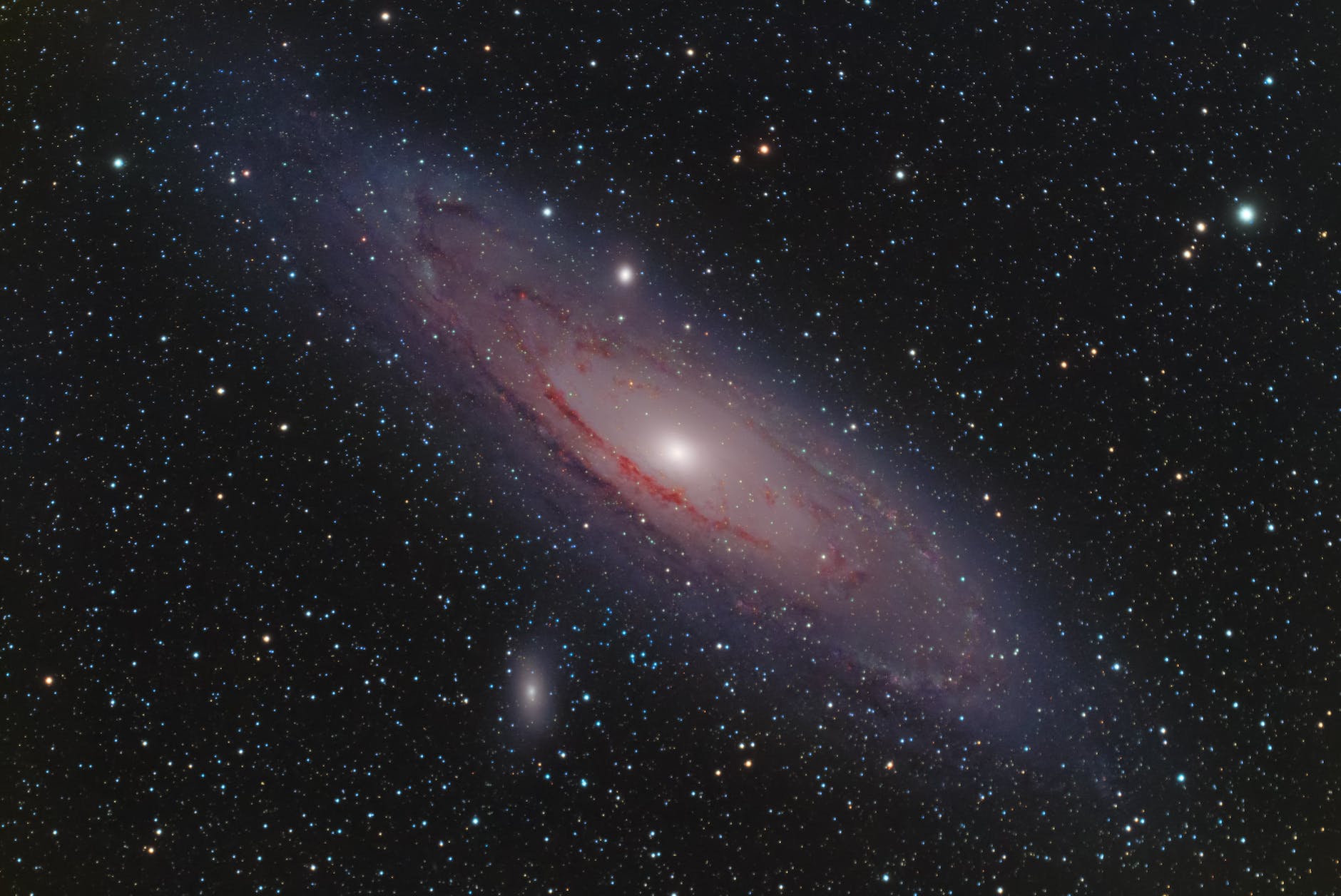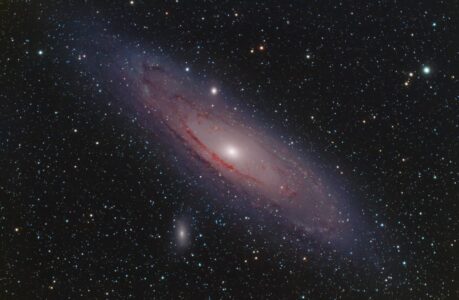Astrophotography is an awe-inspiring and captivating hobby that allows us to capture the breathtaking beauty of the night sky. Whether you’re a seasoned astrophotographer or just starting out on your celestial journey, having the right filters can make a world of difference in the quality, clarity, and richness of your astrophotographs. In this comprehensive guide, we will explore the top 10 must-have filters for astrophotography, each designed to enhance specific aspects of celestial photography and open up a whole new realm of possibilities for your astronomical images. So, grab your camera, telescope, and tripod, and let’s embark on a fascinating journey through the cosmos!
1. Light Pollution Filter
One of the biggest challenges astrophotographers face is the ever-present light pollution that plagues our modern world. Urban areas are often flooded with artificial light sources, which can significantly degrade the quality of our astrophotographs by washing out the delicate details of the night sky. A light pollution filter acts as a shield against these unwanted artificial lights by selectively blocking out specific wavelengths associated with light pollution. By using a light pollution filter, you can capture the natural colors, clarity, and intricate details of celestial objects without the interference caused by light pollution.
2. Hydrogen-Alpha Filter
The hydrogen-alpha (H-alpha) filter is an essential tool for astrophotographers seeking to capture and unveil the hidden secrets of deep-sky objects. Emission nebulae, supernova remnants, and other celestial wonders emit light predominantly at the H-alpha wavelength. This filter specifically isolates the H-alpha wavelength emitted by ionized hydrogen, allowing you to capture stunning images with remarkable clarity and detail. With an H-alpha filter in your arsenal, you can explore and photograph famous objects like the Orion Nebula or the Veil Nebula, revealing their mesmerizing structures and intricate beauty.
3. Oxygen-III Filter
Similar to the H-alpha filter, the oxygen-III (OIII) filter is designed to enhance the visibility of specific wavelengths emitted by ionized oxygen. It is particularly useful for astrophotographers interested in capturing planetary nebulae, supernova remnants, and the elusive and ethereal Veil Nebula. The OIII filter selectively blocks out other wavelengths of light, allowing you to isolate and capture the breathtaking details of these objects. With an OIII filter, you can reveal the intricate structures, filaments, and wisps of gas that make up these celestial wonders, adding a new level of depth and drama to your astrophotographs.
4. Ultraviolet and Infrared Cut Filter
Digital cameras are sensitive to a wide range of wavelengths, including ultraviolet (UV) and infrared (IR) light, which can cause unwanted artifacts, color shifts, and reduced image quality. The ultraviolet and infrared cut filter is a crucial accessory for astrophotographers using digital cameras. This filter blocks out UV and IR light, ensuring accurate color reproduction and preventing the sensor from capturing unwanted light that can degrade the overall image quality. By using a UV and IR cut filter, you can achieve true-to-life colors and maximize the fidelity of your astrophotographs.
5. Moon Filter
The Moon is a captivating subject for astrophotography, with its cratered surface and fascinating lunar features. However, its brightness can often be overwhelming, resulting in overexposed images that lack detail. A moon filter, also known as a neutral density filter, reduces the amount of light entering your telescope or camera, allowing you to capture the intricate details of the lunar surface without sacrificing image quality. This filter is particularly useful during the Moon’s gibbous or full phases when its brightness is at its peak. By using a moon filter, you can reveal the subtle shadows, craters, and textures on the lunar surface, creating stunning and captivating lunar images.
6. Neutral Density Filter
A neutral density (ND) filter is a versatile tool for astrophotographers, providing a range of creative options when capturing celestial objects. ND filters reduce the amount of light entering the camera without affecting the color balance, enabling you to use longer exposure times or wider apertures. This filter is particularly useful when photographing celestial objects during the daytime or twilight hours, allowing you to capture beautiful long-exposure shots of star trails, create stunning time-lapse sequences of the night sky, or experiment with unique compositions and artistic effects. A neutral density filter opens up a world of creative possibilities, adding a touch of magic to your astrophotography endeavors.
7. Infrared Pass Filter
While invisible to the naked eye, infrared (IR) light permeates the night sky and holds hidden treasures waiting to be discovered. An infrared pass filter selectively blocks visible light while allowing only IR light to pass through. By using an infrared pass filter, you can capture stunning images of the Milky Way and other celestial objects, revealing hidden structures, dust lanes, and details that are invisible in visible light. Infrared astrophotography unveils a different perspective of the universe, showcasing ethereal beauty and unveiling mysteries that are otherwise hidden to our eyes.
8. Solar Filter
Astrophotography isn’t limited to capturing the wonders of the night sky; you can also delve into the fascinating realm of solar photography. However, it is crucial to protect both your eyes and camera equipment when photographing the Sun. A solar filter is specially designed to block out harmful levels of light, allowing you to safely capture stunning images of solar phenomena such as sunspots, solar eclipses, and solar prominences. By using a solar filter, you can explore the dynamic and ever-changing nature of our nearest star, revealing intricate details and captivating solar events.
9. Color Filters
Color filters play a vital role in enhancing specific features and details during planetary astrophotography. These filters work by selectively transmitting certain colors of light while blocking others, thus bringing out the subtle details and contrast on the surfaces of planets. For example, a red filter can enhance the contrast of Martian surface features, making them more visible and distinct. Similarly, a blue filter can help reveal the cloud structures on gas giants like Jupiter or the icy terrain on the moons of Saturn. By using color filters, you can uncover hidden secrets and unique characteristics of our neighboring planets, transforming your astrophotographs into stunning and scientifically valuable images.
10. Variable Polarizing Filter
A variable polarizing filter is an incredibly versatile tool for astrophotography enthusiasts. This filter allows you to adjust the amount of polarized light entering your camera, providing exceptional control over glare and reflections. It is particularly useful when photographing objects in bright conditions, such as the Moon or the Sun, where excess light can hinder capturing fine details. By rotating the filter, you can achieve the desired level of light reduction, eliminating glare, enhancing contrast, and improving the overall image quality. A variable polarizing filter is a valuable accessory that empowers you to capture stunning astrophotographs even under challenging lighting conditions.
In Conclusion
As an astrophotographer, having the right filters in your toolkit is essential for capturing breathtaking images of the night sky and celestial objects. Each filter serves a specific purpose, whether it’s combating light pollution, isolating specific wavelengths, enhancing contrast, or revealing hidden details. By investing in these must-have filters, you can take your astrophotography to new heights and unlock the beauty, mysteries, and wonders of theuniverse. Whether you’re photographing deep-sky objects like nebulae and supernova remnants, capturing the intricate details of the Moon’s surface, exploring the secrets of our neighboring planets, or immersing yourself in solar photography, these filters will enhance your images and elevate your astrophotography skills.
So, gather your equipment, experiment with different filters, and embark on a thrilling journey through the cosmos. The universe is waiting to reveal its secrets through the lens of your camera. Happy astrophotography!

